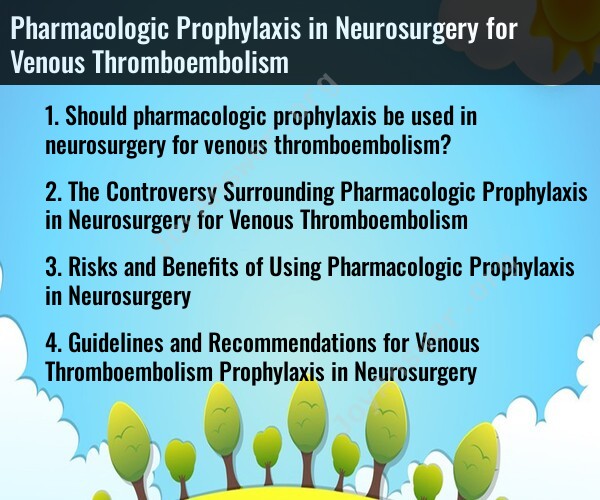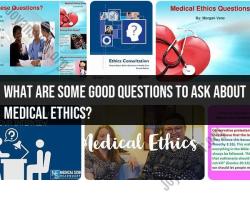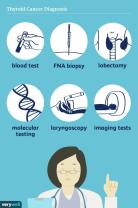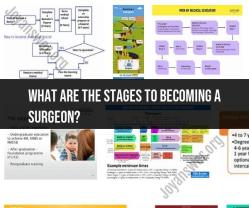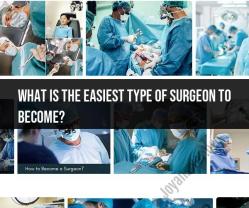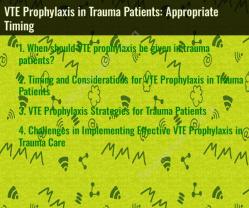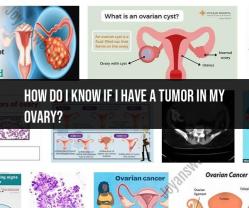Should pharmacologic prophylaxis be used in neurosurgery for venous thromboembolism?
Pharmacologic prophylaxis for venous thromboembolism (VTE) in neurosurgery is a complex medical decision that depends on several factors, including the type of neurosurgery, the patient's individual risk factors, and the potential risks and benefits of prophylactic measures. VTE encompasses conditions like deep vein thrombosis (DVT) and pulmonary embolism (PE) and can be a significant concern in the postoperative period. Here are some key considerations:
Type of Neurosurgery: The type of neurosurgery plays a crucial role in determining the risk of VTE. Some neurosurgical procedures, such as craniotomies for brain tumors, may be associated with a lower risk of VTE compared to spinal surgeries or surgeries involving long immobilization.
Patient Risk Factors: The assessment of individual patient risk factors is essential. Patients with a history of VTE, advanced age, obesity, malignancy, immobility, or certain medical conditions may have a higher risk of developing VTE after neurosurgery.
Bleeding Risk: Pharmacologic prophylaxis typically involves anticoagulant medications, which can increase the risk of bleeding. The risk of bleeding, both intracranial and extracranial, should be carefully evaluated, especially in neurosurgical patients.
Timing of Prophylaxis: Deciding when to initiate pharmacologic prophylaxis is important. In some cases, prophylaxis may begin preoperatively, while in others, it may commence postoperatively. The timing is often influenced by the balance between the risk of VTE and the risk of bleeding.
Duration of Prophylaxis: Determining the appropriate duration of prophylaxis is critical. The length of prophylaxis can vary, and it should be tailored to the patient's specific risk profile and the type of surgery performed.
Individualized Approach: The decision to use pharmacologic prophylaxis should be individualized, taking into account the patient's overall health and specific neurosurgical factors. A multidisciplinary team, including neurosurgeons, anesthesiologists, and hematologists, often collaborates to make these decisions.
Mechanical Prophylaxis: In cases where pharmacologic prophylaxis is contraindicated due to bleeding risk, mechanical prophylactic measures such as intermittent pneumatic compression devices may be considered.
Monitoring and Follow-Up: Close monitoring for signs and symptoms of VTE and bleeding is crucial during and after neurosurgery. Patients should be educated about the risks and symptoms and should report any concerning changes promptly.
Current Guidelines: Medical guidelines, often established by professional medical organizations, provide recommendations for VTE prophylaxis in specific surgical settings. Healthcare providers typically refer to these guidelines when making decisions about pharmacologic prophylaxis.
The decision to use pharmacologic prophylaxis for VTE in neurosurgery should be based on a careful assessment of these factors, in conjunction with current medical guidelines and the patient's informed consent. It's important to recognize that the risk-benefit balance can vary between individual patients and surgical procedures. As such, the decision should be made on a case-by-case basis, with a focus on optimizing patient safety and outcomes. Patients who have concerns or questions about VTE prophylaxis in neurosurgery should discuss these with their healthcare providers.
The Controversy Surrounding Pharmacologic Prophylaxis in Neurosurgery for Venous Thromboembolism
Venous thromboembolism (VTE) is a serious complication of neurosurgery, with an incidence of up to 20%. VTE can lead to pulmonary embolism, which can be fatal. Pharmacological prophylaxis with low-molecular-weight heparin (LMWH) is a widely used and effective method of preventing VTE in neurosurgery. However, there is some controversy surrounding the use of pharmacological prophylaxis, as it can increase the risk of bleeding.
Risks and Benefits of Using Pharmacologic Prophylaxis in Neurosurgery
The risks of using pharmacological prophylaxis in neurosurgery include:
- Bleeding: Pharmacological prophylaxis can increase the risk of bleeding, especially intracranial bleeding. This is a particular concern in neurosurgery patients, as intracranial bleeding can be devastating.
- Heparin-induced thrombocytopenia (HIT): HIT is a rare but serious complication of LMWH therapy. HIT can lead to thrombosis and bleeding.
The benefits of using pharmacological prophylaxis in neurosurgery include:
- Reduced risk of VTE: Pharmacological prophylaxis can significantly reduce the risk of VTE in neurosurgery patients.
- Improved outcomes: Studies have shown that VTE prophylaxis can improve outcomes in neurosurgery patients, including reducing the risk of death.
Guidelines and Recommendations for Venous Thromboembolism Prophylaxis in Neurosurgery
The American Society of Hematology (ASH) and the American College of Chest Physicians (CHEST) have published guidelines on the use of VTE prophylaxis in neurosurgery. The guidelines recommend that all neurosurgery patients receive some form of VTE prophylaxis, unless there is a contraindication.
The guidelines recommend the following VTE prophylaxis regimen for most neurosurgery patients:
- LMWH should be started within 24-48 hours of surgery.
- LMWH should be continued for at least 7 days after surgery.
- LMWH should be used in conjunction with mechanical prophylaxis, such as compression stockings and intermittent pneumatic compression (IPC) devices.
Patients with certain risk factors, such as obesity, a history of VTE, or cancer, may require longer duration of VTE prophylaxis.
Conclusion
The use of pharmacological prophylaxis in neurosurgery is a controversial topic. However, the evidence suggests that the benefits of pharmacological prophylaxis outweigh the risks. The ASH and CHEST guidelines provide guidance on the use of pharmacological prophylaxis in neurosurgery patients.
